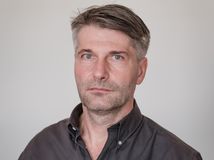In the realm of existence, reality dances to the tune of our subjective
perceptions, a delicate waltz of consciousness and interpretation. There lies
no fixed reality beyond the veil of our awareness; instead, reality emerges
from the intimate embrace of our consciousness. To comprehend reality is to
traverse the labyrinth of our own subjective experience, a journey fraught
with the shadows of interpretation.
While we may grasp the contours of our own consciousness, the essence of
another’s remains veiled, accessible only through the lens of their actions and
expressions. The genesis of thought arises from the naked acknowledgment of
our conscious selves, a concept echoing through the annals of history—from
the ba of ancient Egypt to the Golden Flower of Taoism.
Plato, in his philosophical opus, delineates the tapestry of reality into two
realms: the World of Becoming and the World of Being. The former, a realm of
flux and transience, mirrors the ever-shifting landscape of our sensory
perceptions. Meanwhile, the latter, the realm of forms and ideas, stands
immutable and transcendent—an ethereal sanctuary of absolute truths.
The kaleidoscope of individual perceptions reveals the multifaceted nature of
reality. Two souls standing before the same tree may perceive vastly different
facets, unveiling the enigmatic nature of existence. In this intricate dance of
perception, reality emerges as a controlled hallucination, a symphony
orchestrated by the harmonious interplay of external stimuli and internal
cognition.
In the labyrinth of consciousness, reality unfolds as a tapestry woven from the
threads of perception and interpretation—an eternal enigma awaiting the
seeker’s gaze.
Solipsism is the theory asserting that only the self’s existence can be proven;
certainty about anything beyond one’s own mind is uncertain. According to
this perspective, the external world and the existence of other minds cannot
be known and may not extend beyond one’s consciousness. As a metaphysical
stance, solipsism extends to the belief that the world and other minds are
non-existent.
A better philosophical stance for adherents of the Western Left HAnd Path and
those who practice Majiq is Subjective Reality.
Subjective reality refers to the idea that reality is dependent on individual
perception and interpretation. In subjective reality, there is a strong emphasis
on the subjective experience of each individual rather than an objective,
external reality that exists independently of perception.
In this view, reality is shaped by one’s beliefs, thoughts, emotions, and
experiences. What one person perceives or experiences as real may differ from
what another person perceives or experiences. Subjective reality suggests that
there is no single, objective reality that everyone perceives in the same way.
The quantum double-slit experiment stands as a profound testament to the
intricate dance between individual consciousness and the fabric of the
universe. At its heart lies the intriguing notion that „the observer shapes their
own reality.“
In this enigmatic realm of quantum mechanics, the mere act of observation
wields the power to sway the behavior of particles. The observer’s
consciousness appears to wield influence, dictating whether particles manifest
as waves or particles—an unsettling revelation that challenges conventional
views of an independent, objective reality.
From the depths of philosophical inquiry emerges the profound idea that the
observer is not a passive spectator but an active participant in the unfolding
drama of reality. Through the lens of this perspective, the act of observation
becomes a catalyst, collapsing the wave function and determining the very
outcome of the experiment. This revelation ignites fervent discourse on the
intricate nexus between consciousness and the physical realm, suggesting that
reality is not an isolated entity but a symbiotic creation intertwined with the
conscious mind’s gaze.
Reality, in its essence, unfolds as the subjective tapestry of perceptions we
weave. There exists no absolute reality beyond the confines of our subjective
experience. Our comprehension of reality hinges upon the mediation of
consciousness, rendering it a deeply personal journey. While we may
apprehend the contours of our own consciousness, delving into the depths of
another’s remains an elusive pursuit, often inferred through the tapestry of
their actions. The genesis of conceptual thought springs forth from the raw
acknowledgment of one’s conscious self as a beacon of existential reality—a
timeless concept echoed through the annals of ancient wisdom, from Egypt’s
ba to the Greek psyche and the Taoist Golden Flower.
Plato, the master architect of philosophical thought, crafted a dualistic vision
of reality, unveiling the intricate tapestry of the World of Becoming and the
World of Being. In his paradigm, the World of Becoming emerges as the
tangible fabric of our sensory perceptions—a realm in perpetual flux and
transformation. Conversely, the World of Being stands as the sanctuary of
forms and ideals, embracing the eternal essence of Platonic First Forms and
the ancient Egyptian Neteru. Immutable and transcendent, this realm exerts
its profound influence upon the fundamental nature of entities traversing the
ever-shifting landscapes of the World of Becoming.
Individual perceptions of reality serve as poignant reminders that our
understanding of the world transcends mere visual stimuli. In the presence of
a towering tree, you and I may discern divergent facets, unveiling the
multifaceted nature of existence. The elusive essence of reality dawns upon us,
shrouding us in uncertainty as our conscious and subconscious faculties
construct bespoke interpretations of the world. Neuroscientist Anil Seth
eloquently captures this phenomenon, likening reality to a meticulously
orchestrated hallucination, where external stimuli interlace with internal
frameworks to craft the illusion of reality.
Dr. Bernardo Kastrup, a luminary in the realms of consciousness, beckons us
to reconsider our foundational beliefs. He implores us to recognize that
consciousness stands as the sole arbiter of reality, transcending the illusory
constructs of materialism. In a culture steeped in the dogma of materialism,
where the external world reigns supreme, Kastrup’s clarion call challenges the
very fabric of our societal structures. The philosophy of materialism, with its
insistence on a reality divorced from consciousness, permeates every facet of
our existence—from academia to economics, from cultural norms to
environmental stewardship.
Indeed, the metaphysical underpinnings of materialism dictate not only the
trajectory of academic discourse but also the contours of our daily lives. Our
relationships, our pursuits, our very sense of purpose—all are ensnared
within the web of materialist dogma, perpetuating existing power structures
and reinforcing cultural norms. Kastrup’s insights compel us to reassess our
place in the cosmos, to transcend the confines of materialist thought, and to
embrace a paradigm where consciousness reigns supreme—a paradigm
where the true essence of reality unfolds within the recesses of our own
consciousness.
„The imagination is not a State: it is the Human existence itself.“
„Everything that is possible to be believed is an image of the truth“
______________________
(William Blake)
In 1998, the scholars at the Weizmann Institute of Science unveiled a startling
revelation: reality, it seemed, wavered in response to the gaze of observation,
even when the observer remained an unobtrusive entity.
Fast forward to 2008, and the annals of scientific inquiry yielded a seismic
shift: Objective Reality, once considered an immutable truth, crumbled
beneath the weight of scrutiny. Centuries prior, the sages of antiquity had
already glimpsed this elusive truth, their wisdom echoing through the
corridors of time.
Enter 2012, and Dr. Dean Radin unfurled the tapestry of possibility, his
meticulously crafted experiments unveiling the profound influence of
‚Conscious Intent‘ upon the fabric of reality in the hallowed halls of the
Double-Slit experiment.
Yet, the mantle of General Reality remains a formidable fortress, resistant to
the whims of conscious intervention. To sway the collective consciousness is a
Herculean endeavor, a testament to the arcane artistry of Majiq. Perhaps the
most audacious feat of all time lay in the hands of the Abrahamic faiths, who,
through their tenacity, imbued the global psyche with the belief in a divine
entity and the notion of indebtedness to its divine will.
But change looms on the horizon, a silent revolution unfolding beneath the
veneer of consensus reality. General Reality, governed by the immutable laws
of the cosmic symphony, finds itself ensnared within the intricate web of
Global Consciousness—a collective projection of subjective universes, each
vying to shape the contours of physical reality. If indeed there exists a
clandestine entity akin to the Illuminati, it manifests in the form of this
conglomerate—the architects of reality, sculptors of perception, and guardians
of the unseen realms.



















Celá debata | RSS tejto debaty